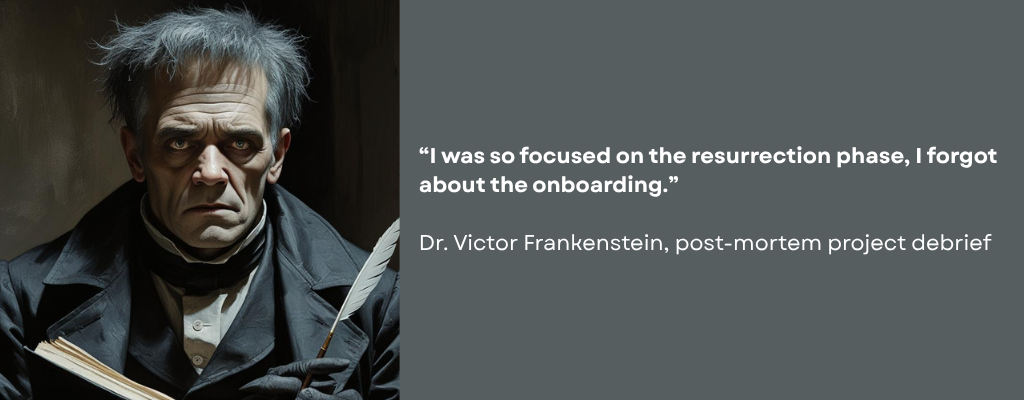- +1 (267) 368-7090
- contact@matcgroup.com
-
53 Knightsbridge Rd,
STE 216
Piscataway, NJ 08854.
In honor of Mary Shelley’s birthday, we’re celebrating Frankenstein Day on August 30 by discussing how Victor Frankenstein failed Instructional Design 101.
Dr. Victor Frankenstein had a dream: to create life from lifeless matter. But as any good instructional designer knows, a grand vision alone isn’t enough, you need a structured plan to ensure success. Instead of following a proven instructional design model like ADDIE (Analysis, Design, Development, Implementation, and Evaluation), Frankenstein skipped critical steps. (See: Instructional Design and ADDIE: An Overview.) The result? A confused, frustrated, and ultimately rampaging learner. Let’s break down his mistakes and see how proper training could have helped his misunderstood creation.

A key component of instructional design is understanding the learner’s needs, abilities, and prior knowledge. Frankenstein? He didn’t even conduct a basic skills assessment. Was the Monster prepared to integrate into society? Did he have any cognitive awareness of human behavior? Could he even speak? These were questions Frankenstein never asked.
Without proper analysis, he essentially threw his learner into the deep end of life with no floaties. Predictably, the Monster struggled, leading to frustration, isolation, and eventual violent outbursts.

After assessing a learner’s needs, instructional designers create structured learning objectives and content delivery strategies. Frankenstein’s plan? Just zap the creature with some lightning and hope for the best.
Instead of a gradual learning approach, he threw an overwhelming amount of information at the Monster (existence itself!) with no clear instructions. Imagine logging into your first day of online training only to be met with a blinking cursor and no guidance. Well, that’s basically what the Monster experienced.

Once you have a design, you develop instructional materials: guides, videos, interactive elements. Frankenstein? Nothing. Not even a basic welcome packet.
Had he developed training resources, perhaps the Monster could have had access to:

A good instructional designer ensures that learners have ongoing support. Frankenstein, however, abandoned his trainee almost immediately. Without guidance or a mentor, the Monster was left to piece together information on his own, leading to some highly questionable learning experiences.
If Frankenstein had used best practices, he might have included:

The final stage of ADDIE is evaluation—analyzing whether the training was effective and making necessary improvements. Frankenstein never sought feedback, never iterated on his approach, and never stopped to ask, “Am I doing this right?”
Spoiler: He was not doing it right.
Had he conducted a post-training evaluation, he might have learned:

Victor Frankenstein’s failure wasn’t in creating life, but in failing to teach it. If he had followed the ADDIE model, perhaps his monster would have become a well-adjusted (if slightly stitched-together) citizen rather than a tragic figure of horror.
Let this be a lesson to instructional designers everywhere: proper training makes all the difference. And if you ever find yourself building a monster, at least provide a solid onboarding program!
What If the Founding Fathers Used Google Docs?
How Documentation and Training Helped the Rebels Blow Up the Death Star